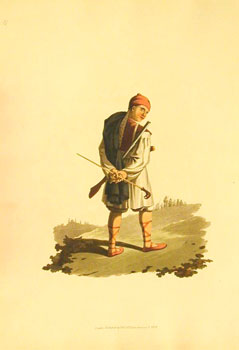| ItemNo: |
2002 |
| Medium: |
Engraving |
| Paper: |
J. Whatman |
| Paper Size: |
14x9.75 in. |
| Released: |
1818-19 |
| Signed: |
Plate |
| Reference: |
See notes |
| Ref. No: |
58 |
| Price: |
$120.00
|
|
|
| Shipping: |
|
| TOTAL: |
$132.00
(USA Only) |
| Add to Cart: |
|
The process was developed in Germany in the 1430s from the engraving used by goldsmiths to decorate metalwork. Engravers use a hardened steel tool called a burin to cut the design into the surface of a metal plate, traditionally made of copper. Engraving using a burin is generally a difficult skill to learn.
Gravers come in a variety of shapes and sizes that yield different line types. The burin produces a unique and recognizable quality of line that is characterized by its steady, deliberate appearance and clean edges. Other tools such as mezzotint rockers, roulets and burnishers are used for texturing effects.
To make a print, the engraved plate is inked all over, then the ink is wiped off the surface, leaving only ink in the engraved lines. The plate is then put through a high-pressure printing press together with a sheet of paper (often moistened to soften it). The paper picks up the ink from the engraved lines, making a print. The process can be repeated many times; typically several hundred impressions (copies) could be printed before the printing plate shows much sign of wear, except when drypoint, which gives much shallower lines, is used.
In the 20th century, true engraving was revived as a serious art form by artists including Stanley William Hayter. |
